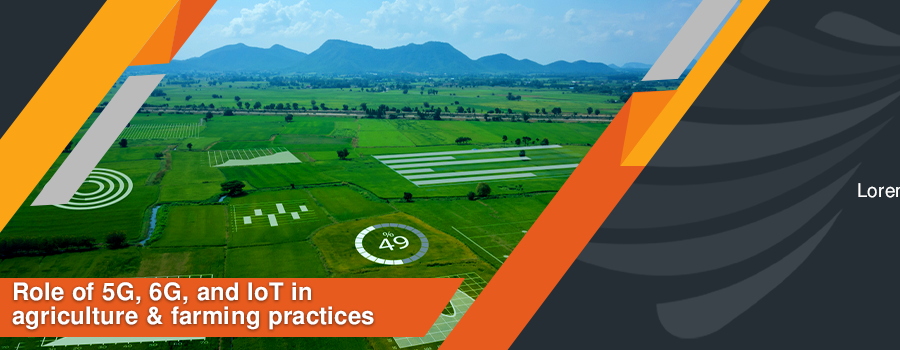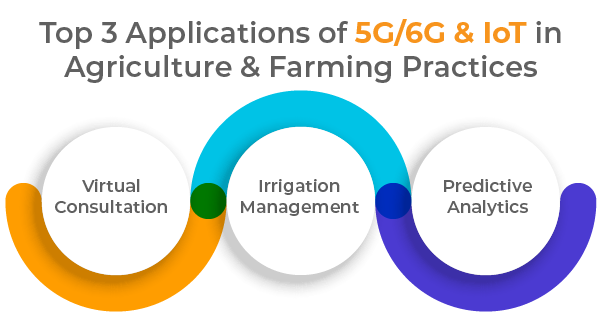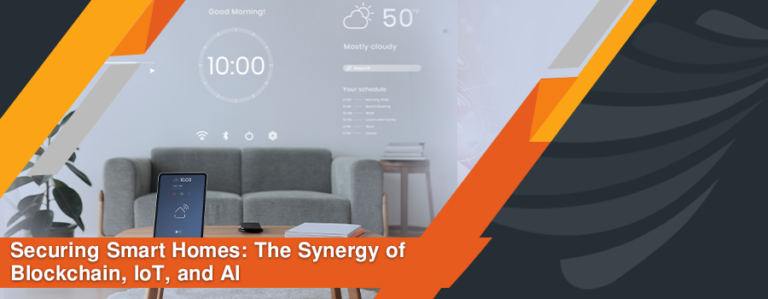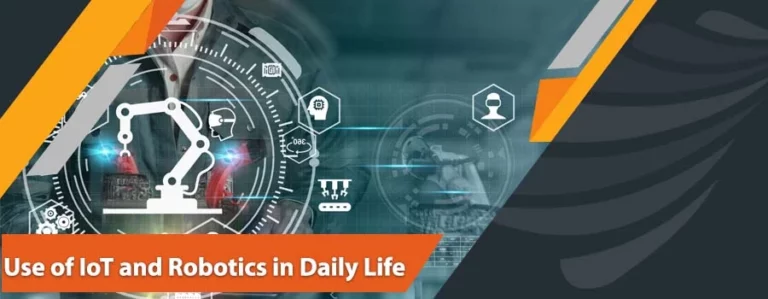Agriculture continues to be one of the most significant global sectors, giving food and income to people all over the world. Farmers may better control the health of their crops and lower the risks of natural disasters, food shortages, and financial losses by embracing the most recent technological breakthroughs.
Automation and operational optimization in agricultural techniques have been transformed by the integration of smart agriculture or smart farming solutions, 5G networks, the Internet of Things (IoT), precision agriculture, and other related technologies. These advanced applications have led to the emergence of Agriculture 4.0, or digital agriculture, which offers unprecedented efficiency and productivity for farmers. With the help of these cutting-edge technologies, we can ensure a sustainable future for agriculture and food production.
This article highlights the understanding of 5g and 6g, its implication, connectivity with IoT, and application in agriculture and farming practices.
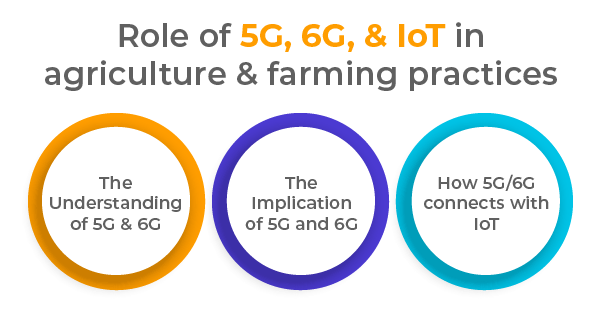
– Understanding 5G and 6G
5g refers to the 5th generation of mobile networks. It is faster and provides more efficient connectivity than 4G. It uses advanced technology like millimeter wave (mmWave) and Massive MIMO to offer better coverage and data transfer rates.
6g refers to the 6th generation of mobile networks. 6G is based on new and advanced algorithms to enhance network performance and assist in developing new and advanced implications like remote surgery, virtual assistance, and robotic application.
However, we expect 6g to be available widely in the late 2030s. Still, it is in the developing stage but hopes to provide much better results with a data transfer rate of up to 1 terabit/second with extremely low latency.
Both 5G and 6G provide faster speeds than 4G LTE. However, 6G is far better than 5G and is an advanced version. Higher frequency bands on the wireless spectrum allow 6G to provide theoretical maximum speeds up to 100 times faster than 5G.
– The implication of 5G and 6G
In many developing nations, limited resources can hinder the adoption of digital agriculture, with local farmers often needing more knowledge and training to leverage modern technology. However, the Internet of Things (IoT) has brought about significant advancements in agriculture, driven by high-speed internet connectivity and cellular communication.
With faster internet connectivity, large files, and information can be easily transferred, making it possible to implement several advanced ideas such as robot navigation, smart agriculture, digital twins, and earth monitoring. These technologies enable farmers to make data-driven decisions, optimize their operations, and improve their yields and profitability.
– How 5G/6G connects with IoT
The Internet of Things (IoT) has transformed how we collect, transfer, and analyze data in real time, leveraging high-speed internet connectivity and connected devices. With the high bandwidth of 5G/6G and low latency, IoT is revolutionizing smart applications such as smart parking, assisted driving, and smart irrigation.
As we move towards 6G and further IoT implications, the agriculture industry is experiencing a significant transformation, supported by highly efficient operations. Some of these advanced operations are process optimization, genetic engineering, virtual assistance based farming programs and robotic help.
These technological implications allow farmers to make data-driven decisions, enabling higher yields and sustainable outcomes. Moreover, the transition towards Industry 5.0 allows farmers to monitor smart crops virtually, plant them at the right time, avoid risks, and harvest them with enhanced efficiency and accuracy.
Also, it helps to save costs and gain profits. The predictive maintenance of crops also allows farmers to identify potential issues at earlier stages and take corrective actions, minimizing the risks of pesticide attacks and crop production loss.
Top 3 Applications of 5G/6G and IoT in Agriculture and Farming Practices
– Virtual Consultation
Technology advancements in 5G, 6G, and IoT are transforming how farmers access online training, education, and advice. With the high bandwidth and low latency of 5G/6G networks, seamless connectivity and communication between agricultural experts and farmers have become possible without physical visits.
The government can take initiatives to provide farmers with virtual training and education programs, enabling them to stay updated and trained in using advanced network management tools and IoT devices such as sensors, drones, and smart devices for better monitoring and growth of crops. Farmers can access these programs from anywhere and anytime, allowing them to keep up with the latest innovative practices.
Furthermore, farmers can receive virtual consultations from experts regarding issues or concerns and optimize their agricultural practices efficiently. This technology is helping farmers optimize their courses, allowing them to work smarter and not harder, ultimately leading to sustainable farming practices benefits.
– Irrigation Management
With time, there is a huge change in climate and a high chance of floods and storms. It affects water availability, crop sustainability, and rainfall predictability. Adopting 5G/6G and IoT can help farmers overcome wrong weather predictions, water shortages, and extended dry spells. IoT-embedded sensors in the soil help collect data on social moisture levels, and data collected via Wi-Fi and drones help to develop heat maps highlighting the problematic areas. Moreover, advanced AI algorithms and network monitoring software process data and help farmers manage crops and sufficiently distribute water in the needed zones.
With the help of IoT-embedded sensors and network monitoring tools, it is now possible to collect data on soil moisture levels, temperature, and other environmental factors that affect crop growth. The data collected can be transmitted wirelessly through Wi-Fi networks or drones, allowing farmers to access real-time information on the status of their crops.
By analyzing the data collected, advanced AI algorithms and network monitoring tools can provide farmers with insights into the best methods of managing their crops and distributing water effectively. Farmers can take preventative action to address the problem by using heat maps to identify troubled areas where water shortages are likely to emerge.
New technologies like IoT, AI, and 5G/6G facilitate smart farming. Even in the face of erratic weather brought on by climate change, it enables farmers to control crop health more effectively and efficiently. Farmers may cut down on waste, boost output, and ultimately succeed more in their agricultural pursuits by utilizing these technologies.
– Predictive Analytics
Farmers can use smart farming techniques and include predictive analytics for more effective outcomes thanks to the convergence of 5G/6G and IoT technologies. AI-based analytics software may create models and frameworks to assist farmers in making the most effective decisions by assessing past and present data and considering various variables and aspects, including soil moisture levels and pesticide usage.
Real-time data can be gathered and processed with higher accuracy and precision thanks to the high bandwidth and low latency of 5G/6G networks, which will benefit smart agriculture. Using predictive analytics, farmers may be more proactive and efficient by spotting possible problems before they arise.
Conclusion
Implementing 5G/6G and IoT technology in farming and agriculture is revolutionizing the sector. The techniques of farming have been transformed by these cutting-edge technologies, becoming more effective, productive, and sustainable. By integrating IoT devices like sensors, drones, and smart devices, farmers can make data-driven decisions and improve their operations for higher yields and profitability. With faster internet connectivity and cellular communication, farmers can easily transfer large files and information, making it possible to implement several advanced ideas such as virtual consultations, smart irrigation, and robotic assistance.

